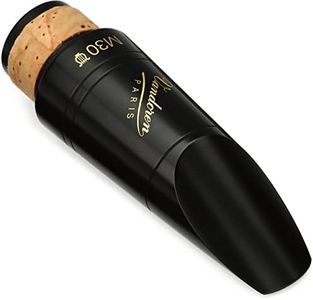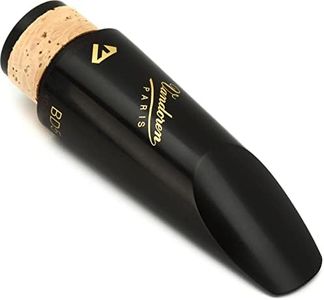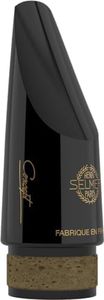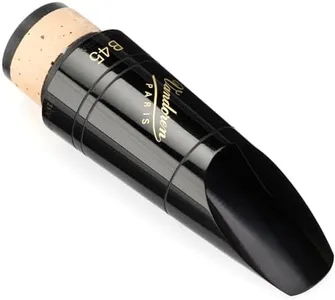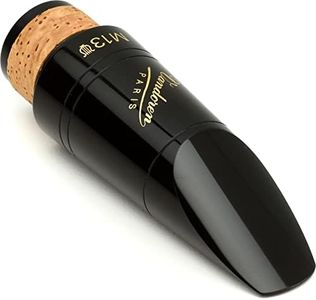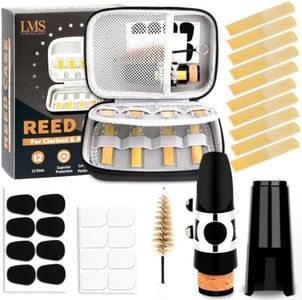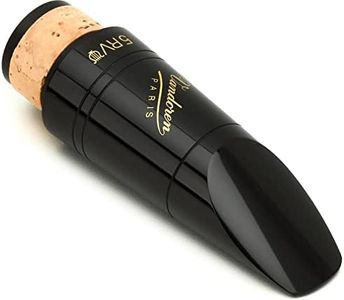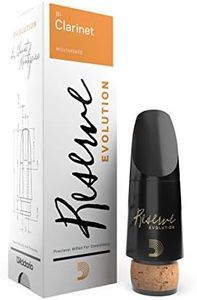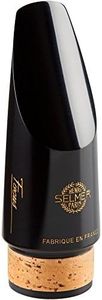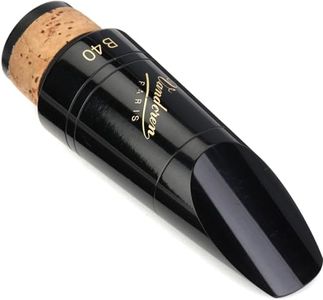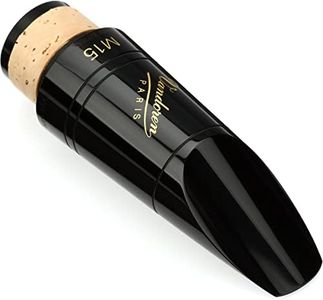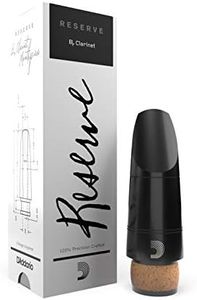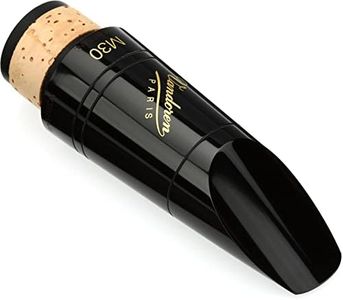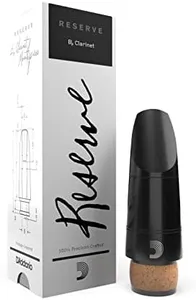Top 10 Clarinet Mouthpieces Deals Right Now
Vandoren CM40018 13 Series M30 Lyre Profile 88 Bb Clarinet Mouthpiece
Our technology thoroughly searches through the online shopping world, reviewing hundreds of sites. We then process and analyze this information, updating in real-time to bring you the latest top-rated products. This way, you always get the best and most current options available.

Our Top Picks
Vandoren CM40018 13 Series M30 Lyre Profile 88 Bb Clarinet Mouthpiece
The Vandoren CM40018 13 Series M30 Lyre Profile 88 Bb Clarinet Mouthpiece is crafted from durable rubber, which is a popular choice for mouthpieces due to its reliability and sound quality. With a tip opening of 113.5 (1/100mm) and a long facing, this mouthpiece is designed for players who prefer a more flexible and responsive playing experience.
It's particularly well-suited for use with Vandoren #3-#4 reeds, providing a good balance of resistance and ease of play. The Profile 88 beak and Series 13 with an A=440 pitch make it a versatile option for various playing styles and settings, especially for those who play in orchestras or bands that tune to A=440.
Weighing only 1.76 ounces and with compact dimensions of 1.75 x 6 x 1.75 inches, it is lightweight and easy to handle. One limitation might be its specific compatibility with certain reeds, which could require players to stick to Vandoren reeds for optimal performance. This mouthpiece ranks #9 in Clarinet Mouthpieces on Amazon, reflecting its popularity and reliability in the musical community.
Great Choice
Vandoren Clarinet Mouthpiece (CM1405)
The Vandoren Clarinet Mouthpiece (CM1405) is a solid choice for clarinet players, especially those looking for clarity and a rich sound. Made from rubber, it offers a comfortable playing experience and is known for its flawless intonation, making it a reliable option for both beginners and experienced musicians. The unique chamber design contributes to its depth and presence, allowing for expressive play. This mouthpiece is particularly well-regarded within the Vandoren brand, which is known for its quality and craftsmanship.
Some players may find that the tip opening and facing length are not as versatile as other options on the market, which could limit its appeal for those seeking a more customized feel. It may not suit every player's style or preference, particularly those who favor a different tonal quality or response.
If you're looking for a mouthpiece that delivers a bright, clear sound and is well-constructed, the Vandoren CM1405 is worth considering, especially if you value good intonation and presence in your playing.
Selmer Paris Bass Clarinet Mouthpiece Concept
Most important from
3 reviews
The Selmer Paris Bass Clarinet Mouthpiece Concept is designed for bass clarinet players who want strong control and a rich sound throughout their instrument's range. Made by the well-known brand Henri Selmer, this mouthpiece features a polished finish and a relatively large tip opening of 2.15mm, which helps produce a dynamic and powerful tone. Users appreciate its clear pronunciation and ease of control, making it a solid choice for players looking to improve expression and projection.
Because of its large tip opening, it may require more breath support and skill, so beginners might find it a bit challenging. This mouthpiece is best suited for intermediate to advanced bass clarinetists who want a modern, versatile option that supports both strong projection and tonal richness.
